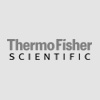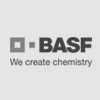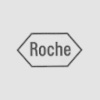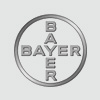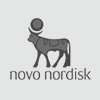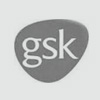HSV-1 Information
The prototype member of the Herpesvirus family is herpes simplex virus (HSV).
There are 2 antigenic types, HSV-1 and HSV-2 which share antigenic cross-reactivity but different neutralization patterns and tend to produce different clinical symptoms. Man is believed to be the natural host for HSV, but the virus is also capable of infecting various animals, including rodents (good animal models). HSV-2 prevalence is, in general, highest in Africa and the Americas, lower in western and southern Europe than in northern Europe and North America, and lowest in Asia. HSV-2 and -1 prevalence, overall and by age, varies markedly by country, region within country, and population subgroup. Age-specific HSV-2 prevalence is usually higher in women than men and in populations with higher risk sexual behavior. HSV-2 prevalence has increased in the United States but national data from other countries are unavailable. HSV-1 infection is acquired during childhood and adolescence and is markedly more widespread than HSV-2 infection.
Virions enveloped; slightly pleomorphic; spherical; 120-200 nm in diameter. Surface projections of envelope small (surface appears rough); spikes; dispersed evenly over all the surface. Nucleocapsids isometric. Nucleocapsid surrounded by the tegument that consists of globular material which is frequently asymmetrically distributed and may be variable in amount. Nucleocapsids sometimes penetrated by stain (although intact envelope impermeable to stain); 100-110 nm in diameter. Symmetry icosahedral. Nucleocapsids appear to be angular. Surface capsomer arrangement obvious. 162 capsomers per nucleocapsid (capsomeres hexagonal in cross-section with a hole running half-way down the long axis). Core consists of a fibrillar spool on which the DNA is wrapped. The ends of the fibers are anchored to the underside of the capsid shell. Incomplete virus particles often present; they are capsids lacking the envelope.
Virions contain one molecule of linear double stranded DNA. Total genome length is 152 kbpt. Genome sequence has terminal repeated sequences; reiterated internally in inverted form; repeated at both ends. Guanine + cytosine ratio 67 %. Each virion contains multiple isomeric forms of genome (i.e. 4 isomeric forms).
Replication:
Interaction of glycoprotein(s) with cellular receptors (not known, but probably different receptors on different cell types - a characteristic of the larger, more complex DNA viruses, and probably common cell surface molecules rather than specific proteins) results directly in fusion of the envelope with the cell membrane. Endocytosis is not absolutely required, but may occur (alternative route for penetration). At least nine of the eleven known HSV-1 glycoproteins have been characterised regarding their role in virus replication:
- During attachment, glycoprotein C (gC) interacts with heparan sulphate (HS), located on the cell membrane surface. This interaction is labile until other glycoproteins such as B and D (gB and gD) begin to participate in the entry process. gB also harbours a site for interaction with other glycosoaminoglycans, while gD provides a stabile attachment to cellular receptors such as the herpesvirus entry mediator (HVEM).
- Late adsorption is associated with a conformation change of gD occurring after the receptor binding, a step followed by interaction of gD with the gH/gL heterodimer (complex).
- Fusion domains of the gH/gL complex and gB enable pH-independent cell penetration.
- The gE/gI complex and gM interact with the receptors at cell junctions in order to facilitate cell-to-cell spread of the virus along the basolateral surface of polarised cells and/or a similar intercellular spread in nonpolarised cells by avoiding virion release.
- gK, the only known HSV-coded glycoprotein which is not incorporated into virions, plays an essential role in virus capsid envelopment during assembly at the nuclear membrane and in virion transport to the cell surface and release.
- The role of the remaining two glycoproteins gJ & ?, is not yet known.
Fusion deposits the capsid in the cytoplasm, where it migrates to the nucleus. The core enters via a nuclear pore where the genome is circularized. The virus genome is accompanied by the a-TIF protein which functions in enhancing immediate early viral transcription via cellular transcription factors.
Infection of non-neuronal cells with HSV-1 results in the degradation of host mRNA and a shutoff of host protein synthesis. The virion host shutoff protein (VHS - UL41) regulates virus gene expression and promotes efficient virus replication during lytic replication. On entry, the VHS protein remains in the cytoplasm where it causes the disaggregation of polyribosomes and degradation of cellular and viral RNA. VHS is conserved in all neurotropic herpesviruses (absent in lymphotropic herpesviruses) and may be involved in establishment of latency. Cultured neurons, in contrast to other cell types, show no reduction in protein synthesis following infection with HSV-1. The resistance of neurones to VHS may be important in allowing establishment of a latent infection. In addition, this finding has resulted in the idea of using HSV-1 as a vector to deliver foreign genes into neurons.
In the nucleus, transcription of the large, complex genome is sequentially regulated in a cascade fashion. Approximately 50 mRNAs are produced by host cell RNA polymerase II. Three distinct classes of mRNAs are made:
|
Gene expression is co-ordinately regulated:
- If translation is blocked shortly after infection, IE mRNAs accumulate in the nucleus, but no other virus mRNAs are transcribed.
- Synthesis of early gene products turns off IE products and initiates genome replication.
- Some of the late structural proteins (g-1) are produced independently of genome replication, others (g-2) are only produced after replication.
Both IE and E proteins are required for genome replication. A virus-encoded DNA-dependent DNA polymerase and DNA-binding protein are involved in replication, together with a number of enzymes (e.g. thymidine kinase) which alter cellular biochemistry. In addition, cellular proteins are required for genome replication, therefore HSV replication occurs in the nucleus.
HSV-1 targets cells with an activated Ras signaling pathway. This property is not unique to HSV-1 but is also seen in other virus groups, such as reoviruses. Inhibitors of the Ras signaling pathway suppress HSV-1 infection of ras-transformed cells. The mechanisms behind these observations are not yet clear, but they raise the possibility that drugs which downregulate the Ras pathway could conceivably be used to virus infections and that "cancer-killing viruses" could be genetically engineered to target cancer cells with the most activated Ras pathways.
The capacity to establish latency is a characteristic feature of all herpesviruses, and involves three separable phases:
- establishment
- maintenance
- reactivation
Following natural infection, establishment of HSV-1 latency occurs within sensory neurons innervating the site of primary infection. A lack of permissivity of at least a proportion of sensory neurones results in failure of productive cycle gene expression and failure of entry into the lytic cycle. The neurones in which herpes establishes latency reside primarily in the sensory ganglia, although there is evidence for the presence of latent virus also in the central nervous system (CNS). Transcription during HHV-1 latency occurs from a very restricted portion of the viral genome, which maps to the repeats flanking the unique long region of the viral genome, and is driven by a single viral promoter. The activity of this promoter leads to the generation of a number of nuclear RNAs which have been designated latency-associated transcripts (LATs). Two of those, termed major LATs, of 2.0 and 1.5 kb respectively, are highly abundant non-polyadenylated transcripts, which map in antisense direction to part of one of the IE genes, ICP0. The function of LATs is still not fully understood. Some LAT deletion mutants display a slow reactivation phenotype or appear to establish latency with reduced efficiency.
It has recently been shown that the LATs promote neuronal survival in rabbits after HSV-1 infection by inhibiting apoptosis (Perng GC, et al: Science. 2000 287:1500-1503 ). The researchers suggest three mechanisms by which this anti-apoptosis function could promote reactivation:
- by providing more latently infected neurons for future reactivations
- by protecting neurons in which reactivation occurs
- by protecting previously uninfected neurons during a reactivation
HSV-1 encodes 75 proteins , but only 37 of these are required for virus growth in cell culture. The remaining genes are not needed in cell culture, but have important functions in the infected hosts, e.g. the HSV-1 late (g) protein ICP 34.5 dephosphorylates eIF-2a, preventing interferon-mediated shutoff of protein synthesis by PKR. This protein is not required for virus replication in some cell types in vitro, but is required for replication in cell lines of neuronal origin, in which ICP 34.5 deletion mutants result in total shutoff of all protein synthesis. An important virulence factor - ICP 34.5 deletion mutants are not virulent in mice, but virulence is restored in transgenic animals lacking PKR.
Herpesviruses have evolved a variety of strategies to modulate the host immune response to virus infection. Although the poxviruses were the first DNA viruses shown to encode secreted versions of cellular cytokine receptors, a number of examples have been discovered in various herpesviruses:
|
Virus DNA replication is the target for a number of successful anti-Herpesvirus drugs (e.g. acyclovir, gancyclovir, etc). The pattern of replication is complex, involving at least 3 potential origins of replication, and resulting in the formation of high molecular weight DNA concatemers.
Virus particles (core plus capsid) assemble in the nucleus - genomic concatemers are cleaved and packaged into pre-assembled capsids.
The envelope is acquired from the inner lamella of the nuclear membrane, and particles accumulate in the space within the inner and outer lamellae. How these particles are transported to the cell surface is not clear and may or may not involve the golgi apparatus. Mutations in certain envelope glycoproteins interfere with cytoplasmic transport. Any remaining virus particles are released when the cell lyses (~24h after infection).
HSV infection appears to be a 'wasteful' process, only ~25% of viral DNA/protein produced is incorporated into virions. The rest accumulates in the cell, which eventually dies. This process produces characteristic nuclear inclusion bodies.
Pathogenesis:
Primary infection occurs through a break in the mucus membranes of the mouth or throat, via the eye or genitals or directly via minor abrasions in the skin. Because of the universal distribution of the virus, most individuals are infected by 1-2 years of age; initial infection is usually asymptomatic, although there may be minor local vesicular lesions. Local multiplication ensues, followed by viremia and systemic infection. There then follows life-long latent infection with periodic reactivation.
During primary infection, the virus enters peripheral sensory nerves and migrates along axons to sensory nerve ganglia in the CNS - allows virus to escape immune response! During latent infection of nerve cells, viral DNA is maintained as an episome (not integrated) with limited expression of specific virus genes required for the maintenance of latency - true latency.
The delicate balance of latency may be upset by various disturbances, physical (injury, U.V, hormones, etc) or psychological (stress, emotional upset - perhaps affecting immune system/hormonal balance).
Reactivation of latent virus leads to recurrent disease - virus travels back down sensory nerves to surface of body and replicates, causing tissue damage:
HHV-1: Primarily associated with oral (cold sores) and ocular lesions.
HHV-2: Primarily associated with genital and anal lesions. By the age of 30, almost 25% of Americans have antibodies to HHV-2. The prevalence of infection in the USA has risen steadily over the last few decades:
Although painful, most recurrent infections resolve spontaneously, usually to reoccur later. More serious are herpetic keratitis (ulceration of cornea due to repeated infection which can lead to blindness) and encephalitis (very rare but often fatal). Incidence of genital herpes has increased sharply during the last few decades - sexual promiscuity and oral contraceptives.
No vaccines currently licensed but a number under development - particularly for HSV-2 - a good candidate for post-exposure vaccination.
HSV-1 is under active development as a vector for gene therapy. The capacity of the LAT promoter to function during latency, which can last a lifetime, indicates that this promoter has potential for a lifelong expression of therapeutic genes. Recent success has been reported in clinical trials of engineered HSV-1 against metastatic melanoma tumors.


